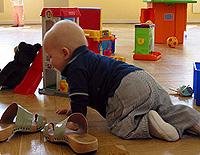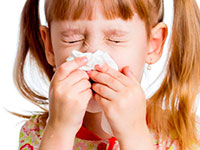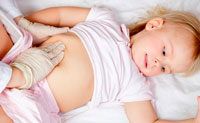Today it will be that the disease polio, due to their danger and severity, requires special attention of parents in the period of life of the baby from birth to 5-6 years. To vaccination issues, when only vaccine from diphtheria and polio can save the child, and so that there are no problems in the future, it should be especially careful. Let's talk about it.
Content
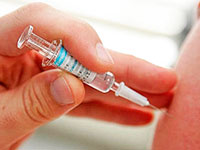 Polio disease usually has a sharp beginning, manifested by the high body temperature, muscle pain in the hands and legs, redness of the mucous membranes of the zea and nose, the runny nose and cough, nausea and the relaxation of the chair and even some disorder of consciousness. Children between the ages of 6 months to 5-6 years are more often sick of this disease. In the body, the virus breeds in almonds, lymph nodes, in the intestine, freely penetrates the blood and central nervous system, it may cause the development of myocarditis. Unfortunately, most often the beginning of the disease is asymptomatic and detect it only on the basis of laboratory data or already after the incubation period, that is, 9-11 days later. The source of infection is always a person. The causative agent of the disease Virus relating to the group of enteroviruses, which stands out through the respiratory tract or with feces, is very resistant to the external environment and is not sensitive to all antibiotics. For infection, 3 forms are distinguished: with the development of complications, with the addition of secondary infection, with exacerbation of already existing chronic diseases.
Polio disease usually has a sharp beginning, manifested by the high body temperature, muscle pain in the hands and legs, redness of the mucous membranes of the zea and nose, the runny nose and cough, nausea and the relaxation of the chair and even some disorder of consciousness. Children between the ages of 6 months to 5-6 years are more often sick of this disease. In the body, the virus breeds in almonds, lymph nodes, in the intestine, freely penetrates the blood and central nervous system, it may cause the development of myocarditis. Unfortunately, most often the beginning of the disease is asymptomatic and detect it only on the basis of laboratory data or already after the incubation period, that is, 9-11 days later. The source of infection is always a person. The causative agent of the disease Virus relating to the group of enteroviruses, which stands out through the respiratory tract or with feces, is very resistant to the external environment and is not sensitive to all antibiotics. For infection, 3 forms are distinguished: with the development of complications, with the addition of secondary infection, with exacerbation of already existing chronic diseases.
Ways of the disease acute infectious polio
According to the method of transmission of the disease of the path of infection can be the most different, namely:
- airborne drip;
- food;
- domestic.
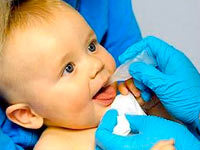 The mechanism of transmission of the virus by air-droplet is extremely simple, it is enough to have a short contact with a patient or a carrier of an infection causative agent, in which the virus is contained in the pharyngeal mucus, and with a conversation, cough or sneezing, it can easily smoke to the mucous membrane of a healthy person through the respiratory tract.
The mechanism of transmission of the virus by air-droplet is extremely simple, it is enough to have a short contact with a patient or a carrier of an infection causative agent, in which the virus is contained in the pharyngeal mucus, and with a conversation, cough or sneezing, it can easily smoke to the mucous membrane of a healthy person through the respiratory tract.
The food path of infection lies through the gastrointestinal tract when drinking vegetables and fruits infected with a virus or not boiled raw milk, where he could have a causative agent of an infection that fell into foods through the patient's feces with, for example, mechanical disease carriers — Mukh.
Poliomyelitis virus can last in water even during freezing, but dies with long boiling, not less than 30 minutes. This information will be very useful for those who are going on a journey through the countries of Southeast Asia or Africa. Knowing and heat requires the use of the maximum amount of water, often with the addition of ice, which could well be cooked from the water infected with the virus some time ago.
And finally, a household way of infection with a dangerous infection through household items, dishes or dirty hands. It is very important at the first signs of the disease on time to identify poliomyelitis, an injection into a vein for blood intimidation and its subsequent analysis of the identification of IG M and Ig titers will indicate the presence of acute infection.
Grafting from infectious diphtheria and poliomyelitis
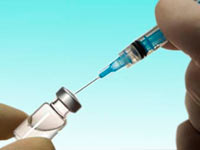 All the above reasons are forced to not forget about the importance, the significance and need for immunization, which, according to the national calendar of preventive vaccination and the revaccination of poliomyelitis begin to perform from infant age. Today, 2 types of vaccines are adopted in the world: inactivated vaccine developed by scientists in America and a living vaccine for receiving inside in the form of a dragee or candy, introduced in the mid-1950s in the former USSR. Worry about the complexity and pain of this procedure are not necessary, because save the child from diphtheria and polio, the injection will help very simply. Vaccinations from diphtheria and polio with subsequent revaccination are prescribed literally shortly after birth. The first injection is done in 3 months, the second — 45 days in 4.5 months, and the third approach to vaccination against poliomyelitis, this is the necessary third injection, which cannot be missed, do at the age of 6 months.
All the above reasons are forced to not forget about the importance, the significance and need for immunization, which, according to the national calendar of preventive vaccination and the revaccination of poliomyelitis begin to perform from infant age. Today, 2 types of vaccines are adopted in the world: inactivated vaccine developed by scientists in America and a living vaccine for receiving inside in the form of a dragee or candy, introduced in the mid-1950s in the former USSR. Worry about the complexity and pain of this procedure are not necessary, because save the child from diphtheria and polio, the injection will help very simply. Vaccinations from diphtheria and polio with subsequent revaccination are prescribed literally shortly after birth. The first injection is done in 3 months, the second — 45 days in 4.5 months, and the third approach to vaccination against poliomyelitis, this is the necessary third injection, which cannot be missed, do at the age of 6 months.
Poliomyelita revaccination — Necessary event
This procedure is held at the age of child 18 and 24 months. To ensure persistent life immunity to the revaccination of children's poliomyelitis returns already at the age of 6, and this vaccination cannot be missed in any case. It should be noted that a sharp decline in deaths from this heavy and dangerous disease followed thanks to the efforts of the World Health Organization for the Prevention and Prevention of Incidence in the World.



